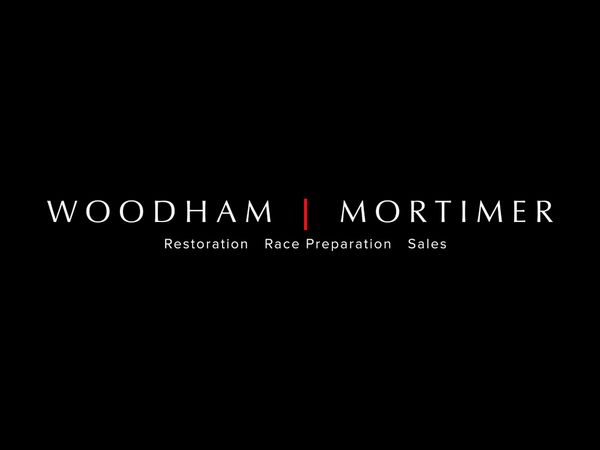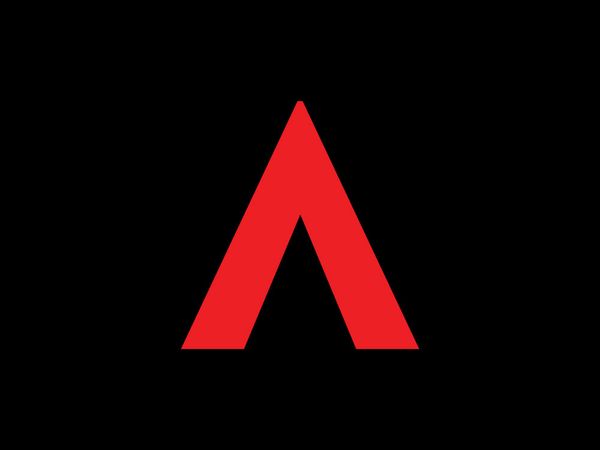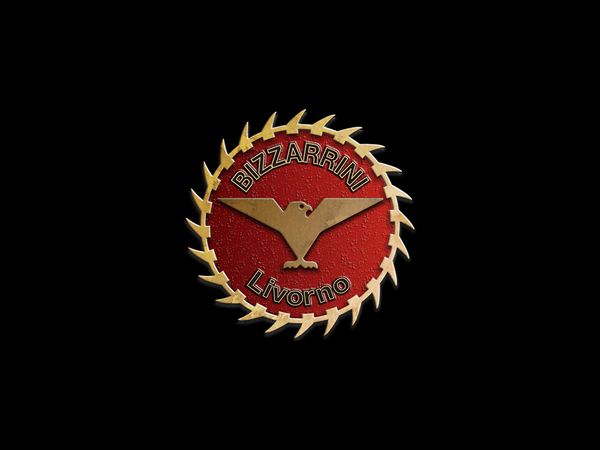When you think Formula One, you think Monaco. As high-powered and sophisticated as the cars that will compete in Round 6 of the FIA Formula One World Championship, so too are the people and their accoutrements which descend upon the smallest and most densely populated country in the world. Yachts line the harbor and exquisite luxury and sports cars line the roads.
Organized racing within the confines of Monaco began in 1929 when Anthony Noghes, son of a wealthy cigarette baron, proposed a grand prix through the streets of Monte Carlo. On April 14, the inaugural Monaco Grand Prix was held, and it was won by William Grover-Williams in a Bugatti. In the 74th Monaco Grand Prix that will take place May 29, the same basic layout crafted by Noghes will challenge today’s Formula One drivers.
Challenge is the key word, for there is no more challenging venue than Monaco. The 78-lap race around the 3.340-kilometer (2.075-mile), 19 turn street circuit features many elevation changes and the tightest corners on the series’ 21-race calendar. It also lays claim to having the only tunnel in Formula One, which forces drivers to adjust their eyes from glaring sun to shade every lap.
Monaco is the shortest circuit in Formula One and it is home to the sport’s slowest corner – the hairpin turn six – which drivers navigate at a pedestrian 50 kph (31 mph) while in maximum steering lock. It’s why three-time Formula One champion Nelson Piquet said racing at Monaco was “like trying to cycle around your living room”. Despite being the shortest track, Monaco is the longest Formula One race in terms of time and, if hampered by wet weather, it will certainly go to its full, two-hour time limit. As result, the glitz and glamour of Monaco is juxtaposed by the gumption it takes to navigate a street circuit that is nearly 90 years old and lined with menacing Armco barrier.
Haas F1 Team drivers Romain Grosjean and Esteban Gutiérrez have six Monaco Grand Prix starts between them – four by Grosjean and two by Gutiérrez. Grosjean’s best result was a point-scoring eighth in 2014 and Gutiérrez’s best was 13th in 2013.
As drivers for the first American Formula One team in 30 years, Grosjean and Gutiérrez will enjoy a high profile in the United States as Monaco kicks off a cavalcade of racing that ensnares race fans from early morning to late at night.
The Monaco Grand Prix is broadcast live by NBC beginning at 8 a.m. EDT/5 a.m. PDT. It is followed by the 100th running of the Indianapolis 500, which rivals the Monaco Grand Prix in terms of prestige. It is broadcast by ABC beginning at 11 a.m. EDT/8 a.m. PDT. Then, after 1,065 kilometers (662 miles) of racing in Monaco and Indianapolis, the longest race on the NASCAR Sprint Cup Series schedule begins – the Coca-Cola 600. This 400-lap race around the 1.5-mile (2.414 kilometer) Charlotte (N.C.) Motor Speedway totals 600 miles (966 kilometers) and lasts nearly five hours. It begins at 6 p.m. EDT/3 p.m. PDT on FOX. If you’re a motorsports fan, your cup runneth over, and all the racing action from each locale can be seen on free, over-the-air television.
For Gene Haas, founder and chairman of Haas F1 Team and co-owner of Stewart-Haas Racing in the NASCAR Sprint Cup Series, the sun will literally rise and set on his racing endeavors.
Haas F1 Team will start this ultimate day of motorsports aiming for point-paying finishes that will bolster its fight in the constructor standings. It’s currently in sixth place, four points behind fifth-place Toro Rosso and eight points ahead of seventh-place Force India.
Meanwhile, Stewart-Haas Racing heads into Charlotte leading the championship standings with driver Kevin Harvick, who brought Haas his second NASCAR Sprint Cup Series championship in 2014, bookending the title Tony Stewart delivered in 2011. And just as Grosjean and Gutiérrez carry the colors of Haas Automation in Formula One, Kurt Busch does the same for Haas Automation in NASCAR. Currently third in the championship standings, Busch seeks his first win of 2016 and the 28th of his career. Harvick, Stewart and Busch will be joined in the Coca-Cola 600 by teammate Danica Patrick, NASCAR’s most successful female driver.
It’s an intense day, which ratchets up immediately when 22 Formula One drivers take the green from a standing start and barrel into turn one at Monaco. It’s game on after that, and for Gene Haas, it doesn’t relent until the sun comes up the next day.
Guenther Steiner:
The last Sunday in May is a heck of a day for motorsports in the United States. It starts with Monaco, continues with the Indianapolis 500 and ends with the Coca-Cola 600. For a motorsports fan in the U.S., what’s that day like?
“It is, for sure, the most intense day of the year for motorsport fans. You know exactly what to do all day long.”
Monaco in Formula One is like the Indianapolis 500 in INDYCAR and the Daytona 500 in NASCAR. Obviously, Monaco is special, but what is the Monaco Grand Prix like for you?
“For me, Monaco is a race like all the others. We’re there to perform and score points. However, it’s always special due to the glitz and the glamour. The biggest difference with Monaco are the distances between everything. You have to walk a lot, so I would say it’s one of the most logistically challenging circuits. And during the race it’s quite intense, because if you make even a small mistake you can be in the wall. Overtaking’s difficult too, so there is more pressure on Saturday during qualifying than there’s actually on Sunday, because by Sunday the positions are set and unless something special happens you end up where you start. Saturday will be intense, for sure.”
When it comes to Monaco, fans see glitz and glamour. But for those who have to work to make a Formula One car go fast at Monaco, do they get to see any glitz and glamour?
“I wish they could. However, they don’t usually as it’s such hard work and there’s always the risk that the car goes in the wall and their work load goes up. Our guys won’t get the time to see the glitz and glamour, but sometimes on Friday afternoon – because we don’t run on Friday in Monaco, its only Thursday, Saturday and Sunday – the guys can get half a day to go out and see a little of the town but, usually, when they’ve nothing to do they sleep because they are tired from the work.”
Things look pretty tight in the paddock and on the pit lane. How difficult are the logistics of Monaco?
“They are the most difficult of the year because there’s no space. Everything you need to do you’ll have half the space, and the distances between things are about 10 times further than any other grand prix. There’s a lot of walking, a lot of scooter driving and everything takes longer. You need to plan for that because if you need something from the truck, you need to go up in the garage to get it down to the paddock. It’s definitely the most challenging one, logistically, of the year.”
Qualifying is always important in Formula One, but is it exceptionally more important at Monaco because it is so tough to pass?
“The race is on Saturday in qualifying. Overtaking is almost impossible, so if nobody crashes or nothing eventful happens on track or during the pit stops, it can be very difficult. Strategy is key for this race. The only place you can overtake is in pit lane if you are close to somebody.”
Because Monaco is so technical, do you consider it a driver’s track, where one’s skills can trump another car’s sophistication?
“It’s a combination but, for sure, in Monaco the driver input and the percentage of what the driver can do is higher. The car always need to be good – a good car is good everywhere – but in Monaco a good driver can make the difference.”
It seems like good days at Monaco become great, but bad days turn even worse. Is success at Monaco so cherished because it’s so difficult to succeed?
“It’s difficult to succeed. It’s a very well-known and famous, glamorous grand prix. Therefore, it’s the one you want to win as a driver.”
Romain Grosjean:
Monaco in Formula One is like the Indianapolis 500 in INDYCAR and the Daytona 500 in NASCAR. Obviously, Monaco is special, but what is the Monaco Grand Prix like for you?
“Monaco is special to me because it’s kind of my home race. We’re beside France and there’s always a lot of people, a lot of fans. It is, of course, special because of all the glamour because it is Monaco. Everyone knows Monaco and everyone wants to be in Monaco. It’s a very challenging track and a very long weekend with lots of demands, but at the end of the day it’s a very nice show.”
The posh, elegant lifestyle around Monaco meets head on with one of the most demanding and unforgiving circuits in Formula One. Monte Carlo is obviously a cool place to visit, but how difficult is it to race there?“It’s pretty difficult to race there. Every city racetrack is complicated. In Monaco, you can’t make any mistakes or you’re straight into the wall. It’s hard to find the right limit of the car. You always have to drive underneath (the limit), unless you’re in qualifying on a very fast lap. It’s very tight there, and it goes very fast between the walls. It’s a great challenge.”
Qualifying is always important in Formula One, but is it exceptionally more important at Monaco because it is so tough to pass?“Yes. It’s almost impossible to pass in Monaco, unless you take big risks, and in that case you may spend some hours with the stewards afterward. Qualifying is the key. You really want to be on the front row. Once the race starts, you want a good start and try to hang in there. It’s one of those races where the chances to overtake are very low. Something really needs to happen for you to be able to come back if you’re racing at the back.”
The Monaco Grand Prix has been held since 1929. Does the history of that race resonate with you, and is there a particular race that stands out for you?
“I do remember Monaco in 1996, 20 years ago, when Olivier Panis won. He was the last Frenchman to win a grand prix. I remember that race, especially as it was a crazy race. He started 14th and was one of only three cars to cross the finish. Of course, the history of Monaco, and all the racing cars, and the changes to the circuit over the years – we love it because Monaco is Monaco.”
Because Monaco is so technical, do you consider it a driver’s track, where one’s skills can trump another car’s sophistication?
“That’s a tricky question. Yes, it’s a driver’s track, where you need to have confidence in your car. But, on the other hand, if your car doesn’t give you any grip, you won’t have any confidence, and you cannot make any difference. It’s just finding that very fine balance in between the car, the driver pushing it, and the fact that yes, once you’re very confident, you can actually make a bit of a difference.”
It seems like good days at Monaco become great, but bad days turn even worse. Is success at Monaco so cherished because it’s so difficult to succeed?
“That’s probably true, yes. It’s probably one of the most difficult races to win. Everything needs to be perfect, from the first free practice to the end of the race. You need a good pace in practice and, hopefully, get a top-three place in qualifying. After that you need a good start, a good strategy and a good run to the end. It’s very difficult to get that right.”
You’re a guy trying to convince his wife or girlfriend to come to a race. If it’s Monaco, where does he need to take her to ensure she gets to enjoy Monaco beyond just the race?
“I think in general, every track that’s in a city – Monaco, Melbourne, Montreal, Singapore, Budapest and Austin – they’re all pretty cool places. There’s obviously the race going on, but alongside that, there’s the city where your wife or girlfriend can explore. Monaco is a high-glamour track because you’ve got the boats, the marina and all of that on top of it. It’s definitely a cool place to bring your wife or girlfriend.”
What is your favorite part of the Monaco circuit?
“I quite like the run up the hill to Casino Corner. It’s a high speed part of Monaco.”
Describe a lap around Monaco.
“So you start on the straight, where it’s very bumpy hitting the brakes into turn one at Sainte Devote. It’s easy to make a mistake here, but then you need to make a good exit for the run up to Casino Corner. Up the hill, blind corner, braking just after the bump, fourth gear, and then third gear for the next one. Going down then you want to avoid the bus stop, which is bumpy, then you head to turn five. There’s always a bit of front-locking, the front inside wheel is in the air. Then the hairpin is a very slow-speed corner. You turn the steering wheel with one hand. After that it’s the two Portier corners. The second one is important because it brings you to the tunnel, which is a straight line on the track. The tunnel is flat out before you have to brake big for the chicane, where there’s another bump. Then you have Tabac, which is quite a high-speed corner, followed by the swimming pool complex, also very high speed. The braking for La Rascasse is tricky, again easy to front-lock. Then there’s a tricky exit for the last corner – it’s not so easy as it’s up a small crest. When you then go down, you can get wheel-spin, and then you’re back on the start-finish straight.”
A brand-new tire compound debuts at Monaco – the Pirelli P Zero Purple ultrasoft. What do you know about it, what do you expect from it and how do you learn the proper working range for a new tire compound?
“We tried it in testing on Tuesday (at Barcelona). We gave them a go to see how they worked and what was possible with them. It’s going to be interesting to see how they react in Monaco. Of course, it’s a very special track, low grip and low speed. I think we’ll have to find out then.”
Esteban Gutiérrez:
Monaco in Formula One is like the Indianapolis 500 in INDYCAR and the Daytona 500 in NASCAR. Obviously, Monaco is special, but what is the Monaco Grand Prix like for you?
“It’s simply the most iconic race on the calendar. There’s a lot of history. It’s very special to race in Monaco, in general. It’s a very cool place.”
The posh, elegant lifestyle around Monaco meets head on with one of the most demanding and unforgiving circuits in Formula One. Monte Carlo is obviously a cool place to visit, but how difficult is it to race there?
“Well, it is one of the most demanding circuits, but it’s very special. It’s very important to keep your focus all weekend, which becomes a challenge, as you have many different distractions around. It’s a very intense event because it’s small, everything’s compressed.”
Qualifying is always important in Formula One, but is it exceptionally more important at Monaco because it is so tough to pass?
“Yes, definitely. It’s the most difficult track to overtake. I would say that qualifying usually determines how the race will finish.”
Where can you pass at Monaco, and how do you do it without a post-race visit to the stewards’ office?
“Turn one is an opportunity, and also going out of the tunnel when you brake for the low-speed chicane. Those two places are the most viable for overtaking.”
The Monaco Grand Prix has been held since 1929. Doe s the history of that race resonate with you, and is there a particular race that stands out for you?
“Monaco, it’s a dream to win there. It’s a career target for any driver. If you win there, you become part of an important history, which dates back to the roots of Formula One.”
Because Monaco is so technical, do you consider it a driver’s track, where one’s skills can trump another car’s sophistication?
“Yes. The car never stops being a factor, but it is true that the driver can have a lot of influence because it’s a track that is very demanding. You can make a lot of difference with different driving styles, and by having the confidence in your car in order to push and get the maximum out of what you have.”
You’re a guy trying to convince his wife or girlfriend to come to a race. If it’s Monaco, where does he need to take her to ensure she gets to enjoy Monaco beyond just the race?
“To be a guest on one of the boats is one way to enjoy it. Another is the restaurants, which provide a very special atmosphere, especially during the grand prix weekend. It’s a very complicated place to take guests, but it is definitely one of the most special.”
What is your favorite part of the Monaco circuit?
“I love turn one, and also turns three and four up at the casino. That part is really special. I like the tunnel and the swimming pool complex, too.”
Describe a lap around Monaco.
“You come into turn one and it’s quite bumpy under braking. It’s very important to maximize track space on the left, very close to the wall, so you can open up as much as possible to the corner. Then you come up to the casino, with a very high-speed corner, entering with a lot of speed, combined with traction. Then it’s down into the next turn, which is medium speed, coming out very quickly on the right-hand side. There’s a lot of bumps as you head down in the straight line to the corner, which has some banking to the right. Then you have one of the slowest corners on the calendar, and it’s very important to get good traction here. Then the next two corners are right-hand, 90 degrees, which leads to the famous tunnel. This is where you pick up the highest speed on the whole track. It is quite challenging. You arrive with a lot of bumpiness into the next braking zone, and it’s high speed and very tricky. You have to put the car in the right position for a slow-speed chicane, which I really love. Then you have a medium-speed corner, followed by the swimming pool, which is high speed and an insane corner. I really love it as you go very close to the walls almost flat out. Going out of the corner you brake straight away for another chicane. Then you’re on to the last two corners, which provide a nice sensation driving between the walls.”
A brand-new tire compound debuts at Monaco – the Pirelli P Zero Purple ultrasoft. What do you know about it, what do you expect from it and how do you learn the proper working range for a new tire compound?
“In Monaco you can’t really do many things with the tires, like lap preparation. It’s pretty irrelevant. You need to go out, push straight away and get a clean lap with all the traffic. That’s important. It will be interesting with this ultrasoft compound. Hopefully it provides a lot of grip for us.”
Circuit de Monaco
Total number of race laps: 78Complete race distance: 260.520 kilometers (161.880 miles)Pit lane speed limit: 60 kph (37 mph)This 3.340-kilometer (2.075-mile), 19-turn circuit has hosted Formula One since 1950.Michael Schumacher holds the race lap record at Monaco (1:14.439), set in 2004 with Scuderia Ferrari.Kimi Raikkonen holds the qualifying lap record at Monaco (1:13.532), set in 2006 with McLaren.There is no more challenging venue in Formula One than Monaco, which features many elevation changes and the tightest corners on the 21-race calendar. Monaco is the shortest circuit in Formula One and it is home to the sport’s slowest corner – the hairpin turn six – which drivers navigate at a pedestrian 50 kph (31 mph) while in maximum steering lock. Despite being the shortest track, Monaco is the longest Formula One race in terms of time and, if hampered by wet weather, it will certainly go to its full, two-hour time limit. Monaco also lays claim to having the only tunnel in Formula One, which forces drivers to adjust their eyes from glaring sun to shade every lap.During the course of this weekend’s Monaco Grand Prix, lows will range from 12-16 degrees Celsius (54-60 degrees Fahrenheit) to highs of 18-22 degrees Celsius (65-72 degrees Fahrenheit). The median cloud cover ranges between 41-49 percent (partly cloudy), and the average probability of rainfall on any given day is 30 percent. Relative humidity ranges from 57 percent (mildly humid) to 90 percent (very humid), with a dew point varying from 7 degrees Celsius/45 degrees Fahrenheit (dry) to 16 degrees Celsius/61 degrees Fahrenheit (comfortable). The dew point is rarely below 3 degrees Celsius/38 degrees Fahrenheit (dry) or above 19 degrees Celsius/66 degrees Fahrenheit (muggy). Typical wind speeds vary from 3-23 kph/2-14 mph (light air to moderate breeze), rarely exceeding 40 kph/25 mph (strong breeze).DYK? Prior to 1969, there were no barriers around the Monaco street circuit. The circuit’s conditions were virtually identical to everyday, civilian use, sans the removal of people’s production cars parked on the sides of the streets. If a driver went off, he would crash into whatever was next to the track – buildings, lamp posts, windows, etc. In the cases of Alberto Ascari and Paul Hawkins, they ended up in the water. Because the concrete road the course used had no Armco barrier to protect the drivers from going off the track, each ended up in the harbor of the Mediterranean. In 1970 and 1971, Armco barrier in specific points was continually added, and by 1972, nearly the entire circuit was lined with Armco barrier.
Pirelli is bringing three tire compounds to Monaco:P Zero Yellow soft – less grip, less wear (used for long-race stints)This is one of the most frequently used tires in Pirelli’s range, as it strikes a balance between performance and durability, with the accent on performance. It is still geared toward speed rather than long distances, but it remains capable of providing teams with a competitive advantage at the beginning of the race where cars are carrying a full fuel load and at the end of the race where the fuel load is much lighter and the race effectively becomes a sprint. It is a high working-range compound.P Zero Red supersoft – more grip, medium wear (used for shorter-race stints and for initial portion of qualifying)This is the second softest tire in Pirelli’s range, and it is ideal for tight and twisting circuits, especially in cold weather, when maximum grip is needed. The supersofts warm up rapidly, which has made it a stalwart choice for qualifying. But with increased grip comes increased degradation. It is a low working-range compound.P Zero Purple ultrasoft – highest amount of grip, highest amount of wear (used for qualifying and select race situations)This is a brand new tire in Pirelli’s lineup, and it debuts at the Monaco Grand Prix. It the softest tire in Pirelli’s range, with rapid warming and massive performance. It is best used on tight and twisting circuits that put a premium on mechanical grip. However, because it so soft, it has a limited lifespan. It is a low working-range compound.Two of the three available compounds must be used during the race. Teams are able to decide when they want to run which compound, adding an element of strategy to the race. A driver can also use all three sets of Pirelli tires in the race, if they so desire. (If there are wet track conditions, the Cinturato Blue full wet tire and the Cinturato Green intermediate tire will be made available.)Pirelli provides each driver 13 sets of dry tires for the race weekend. Of those 13 sets, drivers and their teams can choose the specifications of 10 of those sets from the three compounds Pirelli selected. The remaining three sets are defined by Pirelli – two mandatory tire specifications for the race (one set of P Zero Yellow softs and one set of P Zero Red supersofts) and one mandatory specification for Q3 (one set of P Zero Purple ultrasofts). Haas F1 Team’s drivers have selected the following amounts:Grosjean: one set of P Zero Yellow softs, three sets of P Zero Red supersofts and nine sets of P Zero Purple ultrasoftsGutiérrez: one set of P Zero Yellow softs, three sets of P Zero Red supersofts and nine sets of P Zero Purple ultrasofts



























